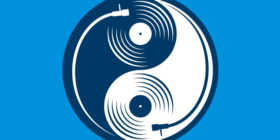With so many artists and producers writing or co-writing their own material, there seem to be fewer opportunities than ever for writers and music publishers to pitch and place songs. It’s become increasingly important to think outside the box when writing and promoting material—and that includes looking beyond our own borders.
Songs by artists such as Beyoncé, John Legend, Katy Perry, Pharrell, and Jason DeRulo are international hits, topping charts around the world. But every country has recording artists whose successes are limited to their territories. These artists can provide important additional outlets for songs.
How Do Songs Differ Outside the U.S.?
Back in the days when songwriting success was an elusive dream for me, music publishers and other industry pros sometimes commented that my songs seemed better suited for the European market. It made me frustrated and angry—because I interpreted that to mean there were elements in my songs that were keeping them from being appropriate for the U.S. market that I had my sights on. In retrospect I see that many of my early songs did not sound consistent with the hits on the radio at the time—but were indeed appropriate for other music markets.
There is no specific style or genre that represents “international” music. Songs that are popular outside the United States encompass a vast variety of musical tastes and styles—and what is perfect for one country might not be what’s in vogue in other territories. For example, during the eras when boy bands and disco music fell out of favor in the U.S., these styles still thrived in other countries.
The annual Eurovision Song Contest reaches 195 million viewers in 41 markets. By listening online to the songs chosen to represent various countries, you can glean a sense of current musical tastes in these territories. While Austria’s winning 2014 entry (“Rise Like a Phoenix”) is stylistically similar to the dramatic power ballads often associated with Celine Dion, other countries’ entries spanned genres from acoustic folk to the ultra-catchy pop popularized by Abba.
J-Pop and K-Pop
J-Pop and K-Pop are wildly popular genres geared to young fans in Japan and Korea, respectively. Many songs that have topped the J-Pop and K-Pop charts would seem right at home on the earliest albums by artists such as ‘NSync, the Backstreet Boys, Boyz II Men, the Spice Girls, and Britney Spears. Other hit J-Pop and K-Pop songs include elements of bubblegum pop, or the big melodic pop ballads popularized by artists such as Whitney Houston, Peter Cetera, Natalie Cole, George Michael, Janet Jackson, and Madonna. The main common denominator is that they are exceptionally melodic and easy to sing along with.
Songs released in Asia are typically translated to the language spoken in the country where the recording is released. In some instances, a new English lyric—or one that combines the singer’s native language with English—is written. Typically, 20% – 50% of the copyright is transferred to the translator, applicable only for the new foreign language versions. Although your lyric and title might be translated, they are still important, because in many instances, the new lyric—while not being a literal translation—will still be based upon the concept of your original version.
Country Music Outside the USA
Country music enjoys popularity in many countries, but what constitutes contemporary country music in Nashville tends to be very different from the country songs popular in other countries. I teach songwriting workshops in Europe, Australia, and New Zealand, and when people learn that I live in Nashville, I’m often told, “I love country music!” When I ask who their favorite artists are, I inevitably hear, “Johnny Cash, Dolly Parton, and Willie Nelson.”
Few of these fans have ever heard a song by Miranda Lambert, Luke Bryan, Jake Owen, Lady Antebellum, Taylor Swift, Keith Urban, or the other artists who regularly top the U.S. Billboard country music charts. But all of the aforementioned artists—including Johnny, Dolly, and Willie—are on the current Australian country music album chart, along with Australian artists such as Adam Harvey and Troy Cassar, and Australia’s “King of Country”—the late Slim Dusty.
Many of Australia’s and New Zealand’s homegrown country artists emulate the traditional approaches of artists such as Alan Jackson, Hank Williams, George Jones, Buck Owens, and Kris Kristofferson, while others would be considered folk, Americana, or bluegrass artists on Music Row. These acts provide opportunities to place songs that would be considered outside the mainstream, and too “traditional” for current U.S. tastes. However, there are exceptions such as Australian sister act the McClymonts, who have recorded in Nashville and written with top Nashville tunesmiths.
Each January, the Tamworth Country Music Festival—the world’s largest country music festival outside of Nashville—celebrates Australian country music with ten days of performances by hundreds of artists. Those who attend the festival can immerse in “Aussie” country music—and network with recording artists and music business professionals.
Similarly, the country music most popular in England, Ireland, Switzerland, Germany, France, and Scandinavia tends to be recordings by icons such as Patsy Cline, Loretta Lynn, Willie Nelson, and Johnny Cash. There are also contemporary sounding country artists in these territories, but their sales and airplay are typically not significant.
Rolf Schnyder runs Liva Music, an independent publishing company in Switzerland that focuses on providing European country artists with songs. According to Rolf, “The main difference here is … I have the feeling, that the lyrics aren’t as important as they are in Nashville. I think the music is more important for the artists than the lyric. If the music fits then they take the song even if the lyric isn’t great. The country artists are also looking if the songs are danceable, since we have a good line dance scene here in Switzerland.”
Canada’s country music charts closely mirror those of its southern neighbor, with the same current Nashville stars enjoying success in both countries. However, Canadian artists, such as Dean Brody, Jess Moskaluke, and Dallas Smith, whose styles are consistent with their Nashville counterparts, garner significant success limited to Canada.
Lyric Considerations for the International Market
When writing songs intended for artists outside the U.S., and when pitching existing catalog songs, it’s important to avoid lyrics that are applicable only to America. According to songwriter/publisher Bob Dellaposta (more than 2,500 songs recorded all over the world), “Lyrically, keep the subject matter universal … having a good time with friends, falling in love, falling out of love. Writing about our American soldiers or writing patriotic songs about the red white and blue isn’t going to fly. The top country acts in Europe sing about the same things we do here in this country; they drink beer and go to the lake, and they like to party and go out dancing. Line dancing is still big across Europe. My best advice is research the artist and listen to what they’ve released and had success with.”
Dellaposta continued, “The songs I’ve had success with outside the USA all had one thing in common—they were all catchy, memorable and easy to dance to. They like strong, hooky choruses, whether it’s a sad, crying-in-your-beer-song, or a happy I’m-in-love song … K.I.S.S. (keep it simple stupid) works best in my opinion. Avoid complicated rhyme schemes, meter, chord progressions and alternative forms/structures.”
It’s also best to avoid references to products and locations, such as Dairy Queen, John Deere, Nacogdoches and Chevy, that are probably not familiar to audiences outside the U.S.
How to Place Songs Outside the U.S.
One way to learn about international artists seeking songs is to subscribe to tip sheets. Bob Dellaposta shared, “I subscribe toSonglink and Songquarters. These pitch sheets list both indie and major acts from around the world, covering every genre with contact info and submission info.”
He advised, “If they say no mp3’s then don’t send an mp3 unless you first ask permission. Some say links only; some say CD’s only. Be professional and don’t e-mail them every three days to ask if they’ve listened. It’s been my experience that no news is usually bad news; they will contact you if there’s an interest.”
Dellaposta also suggested, “It’s important to understand the mechanical licensing process outside the U.S. It’s also good advice to get a good copyright administrator to issue the license or the Harry Fox Agency.”
Attending the annual MIDEM conference in Cannes, France can be an effective way to learn about and place songs with international artists and publishers. With attendees from more than 75 countries, more than 120 conferences, artists’ showcases, and exhibitions, MIDEM provides exceptional networking opportunities. Countless business relationships have begun there, and licensing and publishing deals have been signed. But as is the case in the U.S., there are no rules or easy answers when it comes to placing songs.
A recurring theme I heard when I asked writers how they garnered their international successes was that it was important to be represented by publishers or managers located in foreign territories. A U.S. publisher or manager with an international focus can also make a big difference. Collaborating with writers and artists in other countries has led to cuts for many writers.
Grammy nominated writer/producer Chris Sernel (aka Oh, Hush!) whose songs have been recorded by artists including Jason DeRulo and CeeLo Green underscored this. “I have a cut coming out in Korea later this year with an artist known as “The Paul McCartney of Korea.” We wrote the song for someone like Enrique Iglesias or Jason Derulo. My cowriter is published both in the U.S. and also in Asia, and his Asian publisher placed it.” He said that a “platinum” cut in Sweden with Loreen happened because his publisher sent the song to their Stockholm office.
BMI songwriter/publisher Michael Garvin who has written (18) top-10 singles including (6) #1’s shared that after a string of country successes, and a big dance hit in the U.K., a BMI representative in the London office helped him arrange a visit and collaborations in London. That led to his signing a publishing deal with Miles Copeland in the U.K. He met his main collaborator—a major star in Belgium—at a writing retreat in the south of France, organized by Copeland. Garvin signed subsequent deals with Warner/Chappell in Munich, Sony in Stockholm, and EMI in Brussels.
Garvin spends approximately half his time in Europe, and stressed the importance of collaborating with writers and artists in the territories. He commented, “Music is different, but not better or worse in other countries. Study the individual marketplaces; know who the artists are who are having hits, and find out what you like about those records. If you’ve got the ability to morph and write different styles, that’s beneficial.”
When asked what advice he’d give writers hoping to break through internationally, Garvin stated, “Use every contact; every connection; every opportunity—because you don’t know what will be the magic bullet.”
That sounds like good advice—for every market!
Via BMI World






